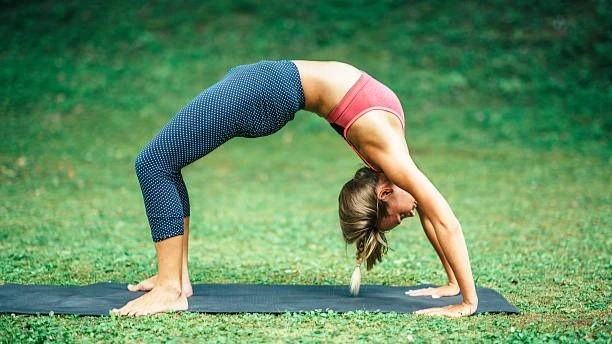Urdhva Padmasana, also known as the Upward Lotus Pose, is a powerful yoga posture that combines the benefits of the Lotus Pose (Padmasana) and an inversion.
This asana not only strengthens the body but also enhances mental clarity and calmness. Here, we explore five significant benefits of Urdhva Padmasana and provide a step-by-step guide to practice it safely.
Benefits of Urdhva Padmasana
Improves circulation: By inverting the body, Urdhva Padmasana helps improve blood circulation, especially towards the brain, which can enhance concentration and cognitive function.
Strengthens the core and shoulders: This pose engages the core muscles, helping to tone the abdomen and strengthen the shoulders and arms, providing overall upper body strength.
Enhances flexibility: Practicing Urdhva Padmasana regularly can increase flexibility in the hips, legs, and spine, promoting better posture and reducing stiffness.
Calms the mind: The inverted position can have a calming effect on the nervous system, reducing stress and anxiety. It also encourages mindfulness and inner peace.
Stimulates the digestive system: The posture aids in stimulating the digestive organs, which can help improve digestion and detoxification.
How to perform Urdhva Padmasana?
Start with padmasana: Begin by sitting in Lotus Pose, placing the right foot on the left thigh and the left foot on the right thigh.
Lie back gently: Slowly lie back while maintaining the Lotus position. Place your hands under your hips for support.
Inversion: Using your core strength, lift your legs and hips upward, bringing your feet towards the sky. Your arms can remain on the floor for support or extend overhead.
Hold and breathe: Keep your gaze upward, breathe deeply, and hold the position for a few breaths.
Return to starting position: Gently lower your legs and hips back to the floor, release the Lotus Pose, and rest.
Practicing Urdhva Padmasana requires patience and flexibility. Beginners should approach this pose with caution and consult a yoga instructor if needed.


